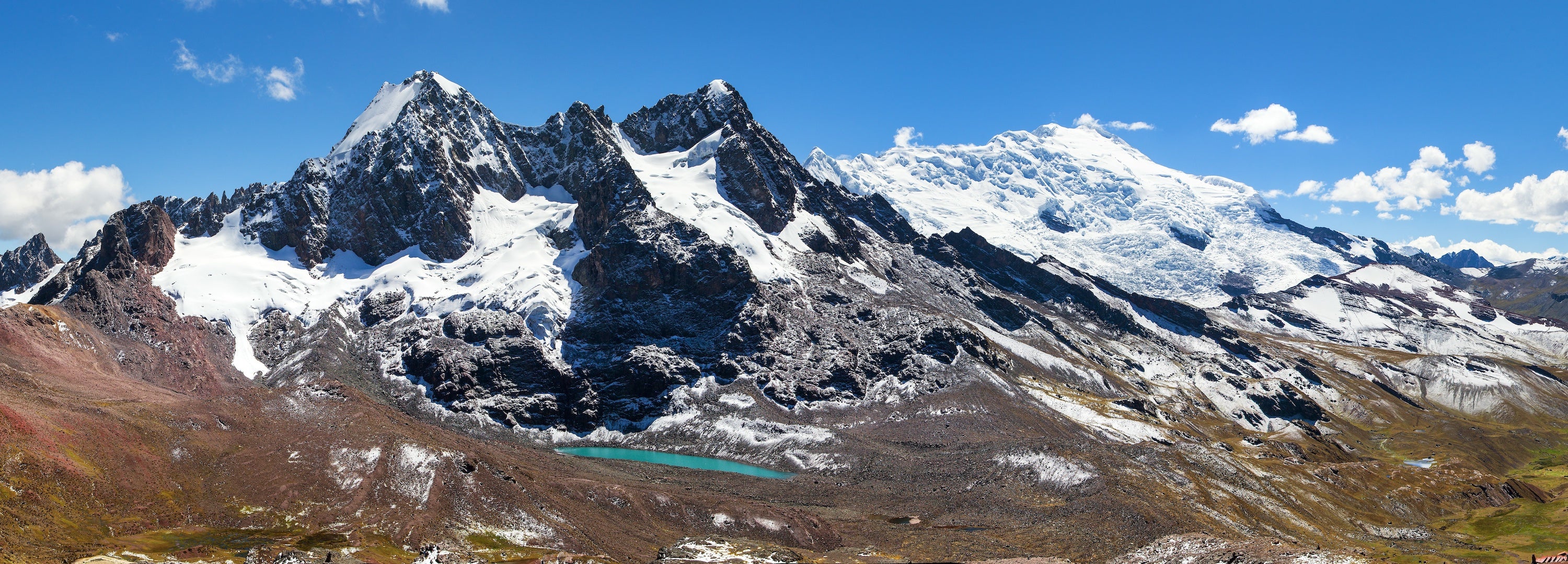You are about to leave the Herb Pharm website. The website will open in a new browser window.
Please select "OK" to continue to the website, or close this box to return to Herb-Pharm.com.

Herbal KnowledgeFeb 2, 2022
The journey to the heart of Peru’s Maca fields starts in the early morning in Lima. Traffic noise filling the air. Horns of various pitches and volumes competing for attention. Lima is the third largest city in the Americas. Bigger than New York, bigger than LA and even bigger than Rio. Only Sao Paulo and Mexico City are larger.
Getting out of town means hopping in a car with our supplier, putting the deep blue of the Pacific Ocean at your back and heading uphill, crawling through a traffic jam. White taxis cutting you off at slow speed. Pedestrians crossing between idling cars and buses. Until we reach the highway and start the real climb.
Lima is at sea level. It has beaches. Maca only grows above 12,000 feet above sea level. The road to the Maca fields is a relentless climb. Up through the Lima suburbs. Up through narrow green river valleys. Up through dusty brown rock hills. Up, up, up into the Andes. Until the air gets thin and you realize you’re getting a little light headed. Then up some more.
In 3-4 hours or so, the road crosses over a pass that’s over 15,800 feet above sea level. In the passenger seat, everything is a struggle. Light-headedness has mixed with a dull headache. Sometime later, the road drops into a wide rocky plain.

A breathtaking look at the sun-drenched Andes mountains, where our Maca grows 12,000 feet above sea level.
We’re in the Peruvian state of Junin. The area is just vast. Brown dry stony soil in rolling hills as far as the eye can see. You can see nothing growing but tufts of grass. No trees. The air is too thin and the wind is just pounding. During the day, the sun’s unfiltered ultra-violet radiation is intense. At night, the cold is numbing. Few plants grow here. But Maca does. In fact, this is the world’s epicenter of Maca growing. And we’ve arrived in time for the harvest.
They’ve been growing Maca up here for more than 2,000 years. That puts the fields in this region as older than the Incan Empire, older than the Spanish conquest, and certainly older than the current boom in Maca demand worldwide.
At Herb Pharm, we’ve been working with the same Maca supplier for years. We can’t replicate these harsh conditions at our farm in Oregon, and we wouldn’t want to. Our partnership does more than just get us some of the best Maca in the world. It helps support a whole region’s economy. We started out using Maca from just a few of their fields. But now, as demand has grown, we’re sourcing from fields across the region. Maca has become a big enterprise in Junin. Our partner now employs hundreds of people in the harvest season. Giving locals a better option than raising marginal livestock herds in the difficult conditions.
The car slows to a stop aside a small dirt track next to one such field. People are out there, hunched low to the ground in ones and twos, already at work. When we open the doors, everything is slow and dizzying. There’s just not enough air. The wind kicks up. The ground crunches underfoot. It takes forever just to walk from the car to where the closest worker is harvesting.
Maca is surprising. If you didn’t know what you were looking for, you’d miss it. It looks like short bits of dying leaf poking out of the soil, losing a battle with the harsh wind. You look at it and it’s like, “really? That’s Maca? We drove all this way for this?”
It’s the root that gets harvested. A thick, swollen root that looks like a turnip. It comes in different colors, none of them particularly showy.
Slowly, we get a tour of the fields. Meeting workers who laugh and joke as they harvest the roots. Examining the small facility where they dry the Maca before shipping it to Oregon. It never really gets easier to breathe. By the time we get back to the car, we’re exhausted. Lima is still hours away.
You can find Herb Pharm’s Certified Organic Maca in our Male Vitality compound, as a single extract and as a capsule. You may also want to try our delicious Maca Colada recipe.
Don't forget! Check your Rewards account for coupons.
CHECKOUTYou are about to leave the Herb Pharm website. The American Association of Naturopathic Physicians website will open in a new browser window.
Please select "OK" to continue to the American Association of Naturopathic Physicians website, or close this box to return to Herb-Pharm.com.
You are about to leave the Herb Pharm website. The website will open in a new browser window.
Please select "OK" to continue to the website, or close this box to return to Herb-Pharm.com.